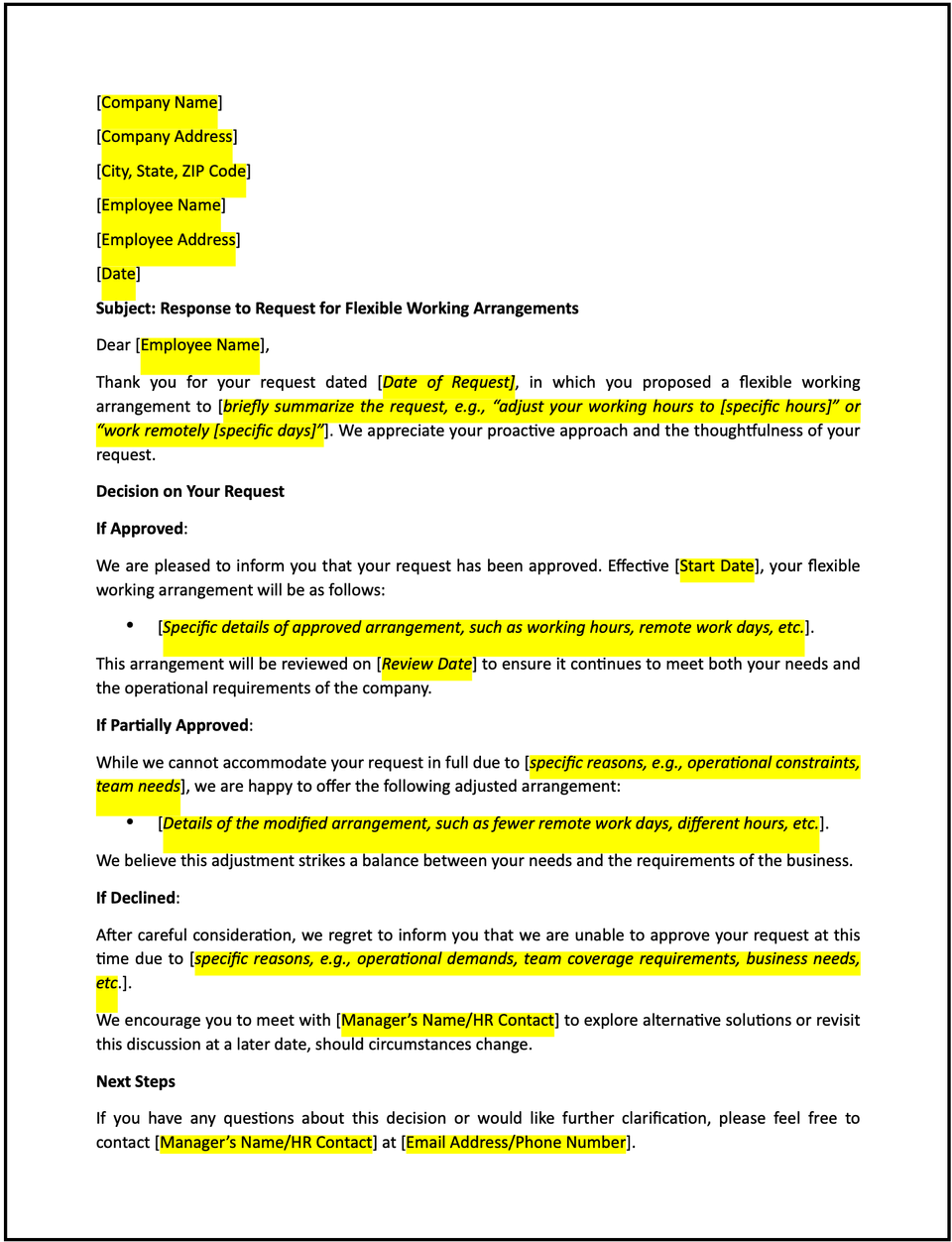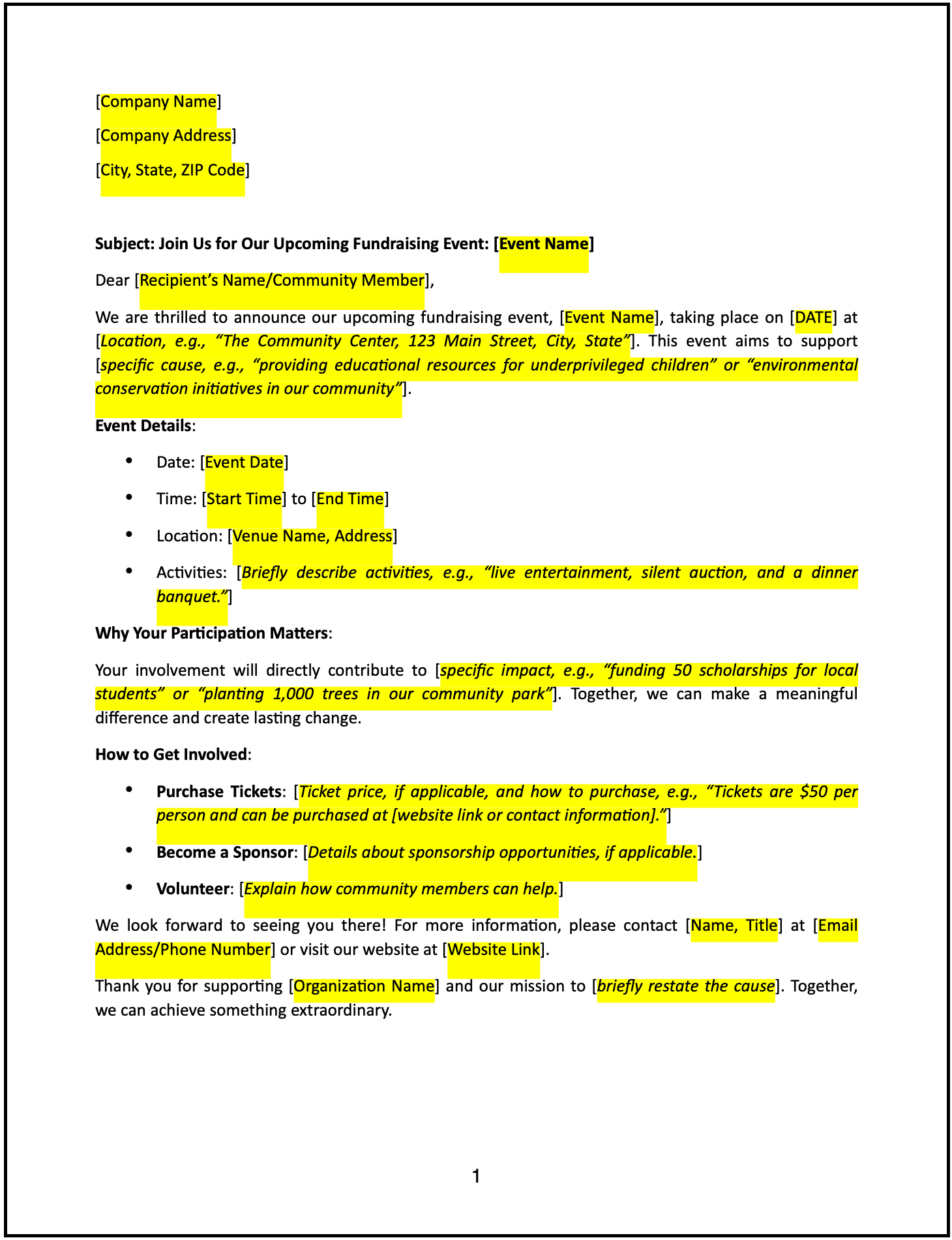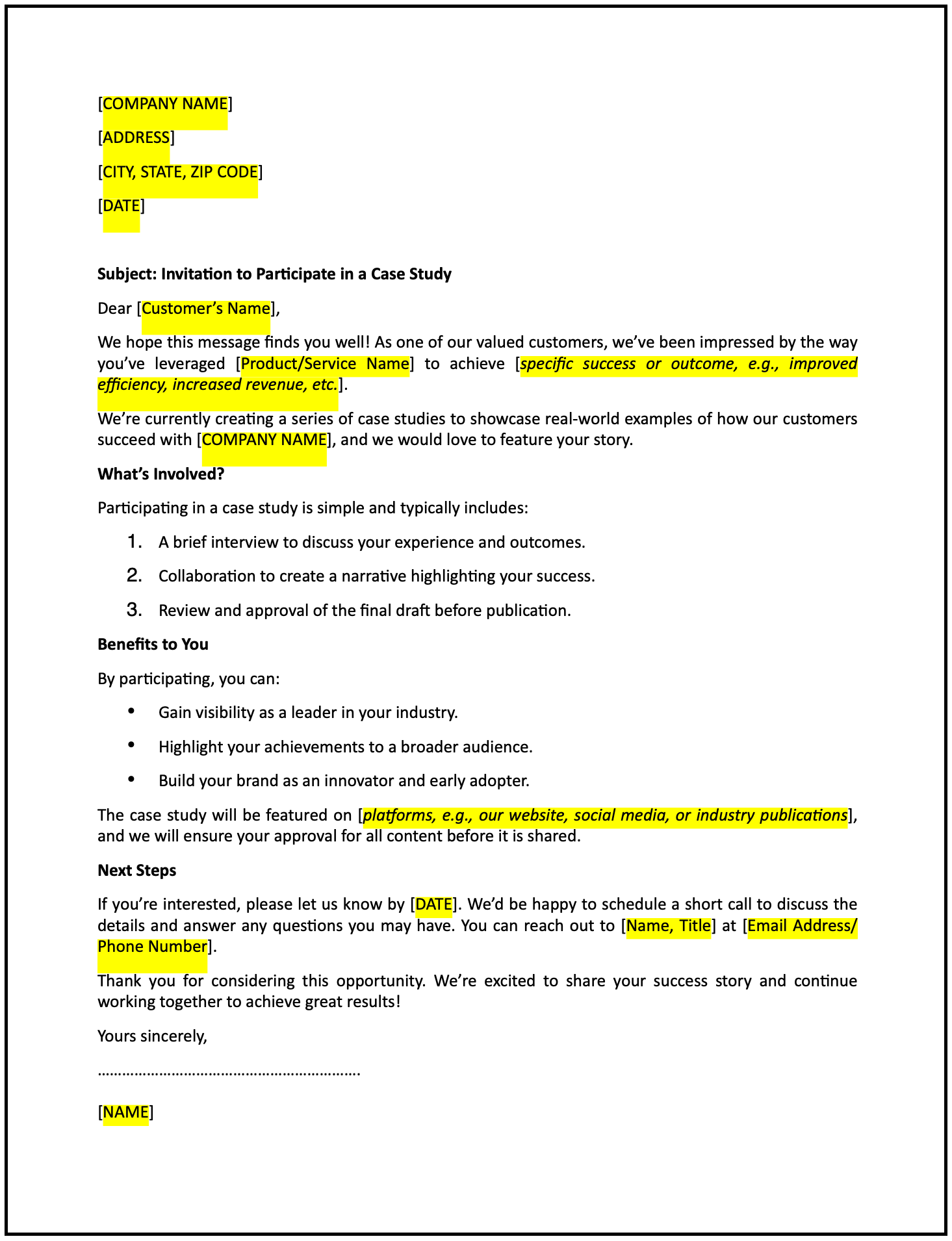Letter of response to request for flexible working arrangements: Free template

Letter of response to request for flexible working arrangements
A letter of response to a request for flexible working arrangements is a formal way to address an employee’s request for changes to their work schedule or location. This letter outlines the organization’s decision, provides reasoning, and ensures transparency while fostering a respectful and supportive approach.
How to use this letter of response to request for flexible working arrangements
- Open with acknowledgment: Begin by acknowledging the employee’s request and expressing appreciation for their communication.
- State the decision: Clearly communicate whether the request has been approved, modified, or declined.
- Provide reasoning: If the request is modified or declined, explain the rationale behind the decision, referencing organizational policies or operational needs.
- Outline the details: For approved or modified requests, specify the new working arrangements, including start date, schedule, and any conditions.
- Highlight expectations: Clarify how the employee’s responsibilities and performance will be managed under the new arrangement.
- Offer support: Provide resources, such as HR contacts or tools, to assist the employee with the transition.
- Maintain a professional and respectful tone: Ensure the letter is clear, empathetic, and supportive.
- Provide contact information: Include details for further discussions or to address questions about the decision.
Benefits of using a letter of response to request for flexible working arrangements
This letter template ensures a structured and professional way to address employee requests while fostering transparency and goodwill. Here’s how it helps:
- Promotes clarity: Clearly outlining the decision minimizes misunderstandings and confusion.
- Reflects professionalism: A respectful tone demonstrates the organization’s commitment to fair and open communication.
- Encourages engagement: Providing thoughtful responses fosters trust and mutual respect.
- Supports alignment: Clearly defined arrangements ensure the employee and organization are aligned on expectations.
- Provides documentation: A formal record of the response is valuable for HR and compliance purposes.
Tips for writing an effective letter of response to request for flexible working arrangements
- Be specific: Clearly describe the decision, including any conditions or changes to the request.
- Use professional language: Maintain a respectful and empathetic tone to foster understanding.
- Highlight reasoning: Provide clear and objective reasons for the decision to build trust.
- Include next steps: Outline what the employee should do next, such as confirming acceptance or discussing adjustments.
- Keep it concise: Focus on the key points while ensuring the tone is positive and professional.
Frequently asked questions (FAQs)
Q: What details should I include in this letter?
A: Include acknowledgment of the request, the decision, reasoning, any new arrangements, and next steps.
Q: Should I personalize the letter?
A: Yes, addressing the employee directly ensures clarity and demonstrates attentiveness.
Q: Who typically sends this letter?
A: The employee’s manager, supervisor, or an HR representative usually sends this letter.
Q: How formal should this letter be?
A: The tone should be professional yet empathetic, focusing on clarity and respect.
Q: When should this letter be sent?
A: Send the letter promptly after reviewing the request to ensure timely communication.
Q: Can this letter include a trial period for flexible arrangements?
A: Yes, specifying a trial period allows the organization to assess the feasibility of the arrangement.
Q: Is acknowledgment from the recipient required?
A: Yes, requesting acknowledgment ensures the employee understands the decision and next steps.
This article contains general legal information and does not contain legal advice. Cobrief is not a law firm or a substitute for an attorney or law firm. The law is complex and changes often. For legal advice, please ask a lawyer.


